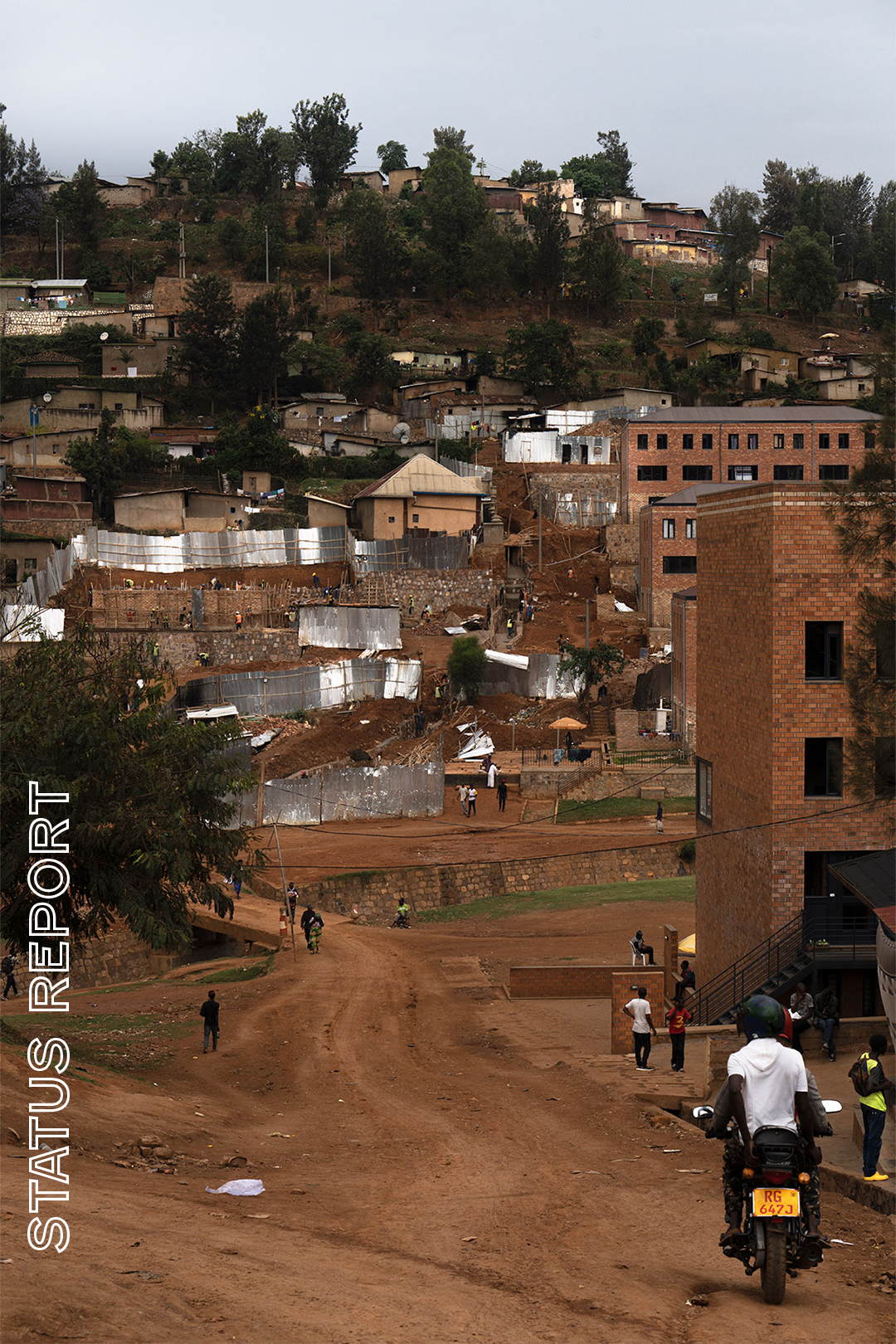PHOTOGRAPHY
Photography Etymology Photography is the art, application, and practice of creating durable images by recording light, either electronically by means of an image sensor, or chemically by means of a light-sensitive material such as photographic film. It is employed in many fields of science, manufacturing (e.g., photolithography), and business, as well as its more direct uses for art, film and video production, recreational purposes, hobby, and mass communication.[1] Typically, a lens is used to focus the light reflected or emitted from objects into a real image on the light-sensitive surface inside a camera during a timed exposure. With an electronic image sensor, this produces an electrical charge at each pixel, which is electronically processed and stored in a digital image file for subsequent display or processing. The result with photographic emulsion is an invisible latent image, which is later chemically "developed" into a visible image, either negative or positive, depending on the purpose of the photographic material and the method of processing. A negative image on film is traditionally used to photographically create a positive image on a paper base, known as a print, either by using an enlarger or by contact printing. The word "photography" was created from the Greek roots φωτός (phōtós), genitive of φῶς (phōs), "light"[2] and γραφή (graphé) "representation by means of lines" or "drawing",[3] together meaning "drawing with light".[4] Several people may have coined the same new term from these roots independently. Hércules Florence, a French painter and inventor living in Campinas, Brazil, used the French form of the word, photographie, in private notes which a Brazilian historian believes were written in 1834.[5] This claim is widely reported but is not yet largely recognized internationally. The first use of the word by Florence became widely known after the research of Boris Kossoy in 1980.[6] The German newspaper Vossische Zeitung of 25 February 1839 contained an article entitled Photographie, discussing several priority claims – especially Henry Fox Talbot's – regarding Daguerre's claim of invention.[7] The article is the earliest known occurrence of the word in public print.[8] It was signed "J.M.", believed to have been Berlin astronomer Johann von Maedler.[9] The astronomer John Herschel is also credited with coining the word, independent of Talbot, in 1839.[10] The inventors Nicéphore Niépce, Talbot, and Louis Daguerre seem not to have known or used the word "photography", but referred to their processes as "Heliography" (Niépce), "Photogenic Drawing"/"Talbotype"/"Calotype" (Talbot), and "Daguerreotype" (Daguerre).[9]. Precursor technologies Photography is the result of combining several technical discoveries, relating to seeing an image and capturing the image. The discovery of the camera obscura ("dark chamber" in Latin) that provides an image of a scene dates back to ancient China. Greek mathematicians Aristotle and Euclid independently described a camera obscura in the 5th and 4th centuries BCE.[11][12] In the 6th century CE, Byzantine mathematician Anthemius of Tralles used a type of camera obscura in his experiments.[13] The Arab physicist Ibn al-Haytham (Alhazen) (965–1040) also invented a camera obscura as well as the first true pinhole camera.[12][14][15] The invention of the camera has been traced back to the work of Ibn al-Haytham.[16] While the effects of a single light passing through a pinhole had been described earlier,[16] Ibn al-Haytham gave the first correct analysis of the camera obscura,[17] including the first geometrical and quantitative descriptions of the phenomenon,[18] and was the first to use a screen in a dark room so that an image from one side of a hole in the surface could be projected onto a screen on the other side.[19] He also first understood the relationship between the focal point and the pinhole,[20] and performed early experiments with afterimages, laying the foundations for the invention of photography in the 19th century.[15] Leonardo da Vinci mentions natural camerae obscurae that are formed by dark caves on the edge of a sunlit valley. A hole in the cave wall will act as a pinhole camera and project a laterally reversed, upside down image on a piece of paper. Renaissance painters used the camera obscura which, in fact, gives the optical rendering in color that dominates Western Art. It is a box with a small hole in one side, which allows specific light rays to enter, projecting an inverted image onto a viewing screen or paper. The birth of photography was then concerned with inventing means to capture and keep the image produced by the camera obscura. Albertus Magnus (1193–1280) discovered silver nitrate,[21] and Georg Fabricius (1516–1571) discovered silver chloride,[22] and the techniques described in Ibn al-Haytham's Book of Optics are capable of producing primitive photographs using medieval materials.[23][24] Daniele Barbaro described a diaphragm in 1566.[25] Wilhelm Homberg described how light darkened some chemicals (photochemical effect) in 1694.[26] The fiction book Giphantie, published in 1760, by French author Tiphaigne de la Roche, described what can be interpreted as photography.[25] Around the year 1800, British inventor Thomas Wedgwood made the first known attempt to capture the image in a camera obscura by means of a light-sensitive substance. He used paper or white leather treated with silver nitrate. Although he succeeded in capturing the shadows of objects placed on the surface in direct sunlight, and even made shadow copies of paintings on glass, it was reported in 1802 that "the images formed by means of a camera obscura have been found too faint to produce, in any moderate time, an effect upon the nitrate of silver." The shadow images eventually darkened all over.[27] Invention The first permanent photoetching was an image produced in 1822 by the French inventor Nicéphore Niépce, but it was destroyed in a later attempt to make prints from it.[28] Niépce was successful again in 1825. In 1826 he made the View from the Window at Le Gras, the earliest surviving photograph from nature (i.e., of the image of a real-world scene, as formed in a camera obscura by a lens).[29] Because Niépce's camera photographs required an extremely long exposure (at least eight hours and probably several days), he sought to greatly improve his bitumen process or replace it with one that was more practical. In partnership with Louis Daguerre, he worked out post-exposure processing methods that produced visually superior results and replaced the bitumen with a more light-sensitive resin, but hours of exposure in the camera were still required. With an eye to eventual commercial exploitation, the partners opted for total secrecy. Niépce died in 1833 and Daguerre then redirected the experiments toward the light-sensitive silver halides, which Niépce had abandoned many years earlier because of his inability to make the images he captured with them light-fast and permanent. Daguerre's efforts culminated in what would later be named the daguerreotype process. The essential elements—a silver-plated surface sensitized by iodine vapor, developed by mercury vapor, and "fixed" with hot saturated salt water—were in place in 1837. The required exposure time was measured in minutes instead of hours. Daguerre took the earliest confirmed photograph of a person in 1838 while capturing a view of a Paris street: unlike the other pedestrian and horse-drawn traffic on the busy boulevard, which appears deserted, one man having his boots polished stood sufficiently still throughout the several-minutes-long exposure to be visible. The existence of Daguerre's process was publicly announced, without details, on 7 January 1839. The news created an international sensation. France soon agreed to pay Daguerre a pension in exchange for the right to present his invention to the world as the gift of France, which occurred when complete working instructions were unveiled on 19 August 1839. In that same year, American photographer Robert Cornelius is credited with taking the earliest surviving photographic self-portrait.In Brazil, Hercules Florence had apparently started working out a silver-salt-based paper process in 1832, later naming it Photographie. Meanwhile, a British inventor, William Fox Talbot, had succeeded in making crude but reasonably light-fast silver images on paper as early as 1834 but had kept his work secret. After reading about Daguerre's invention in January 1839, Talbot published his hitherto secret method and set about improving on it. At first, like other pre-daguerreotype processes, Talbot's paper-based photography typically required hours-long exposures in the camera, but in 1840 he created the calotype process, which used the chemical development of a latent image to greatly reduce the exposure needed and compete with the daguerreotype. In both its original and calotype forms, Talbot's process, unlike Daguerre's, created a translucent negative which could be used to print multiple positive copies; this is the basis of most modern chemical photography up to the present day, as daguerreotypes could only be replicated by rephotographing them with a camera.[30] Talbot's famous tiny paper negative of the Oriel window in Lacock Abbey, one of a number of camera photographs he made in the summer of 1835, may be the oldest camera negative in existence.[31][32]In France, Hippolyte Bayard invented his own process for producing direct positive paper prints and claimed to have invented photography earlier than Daguerre or Talbot.[33] British chemist John Herschel made many contributions to the new field. He invented the cyanotype process, later familiar as the "blueprint". He was the first to use the terms "photography", "negative" and "positive". He had discovered in 1819 that sodium thiosulphate was a solvent of silver halides, and in 1839 he informed Talbot (and, indirectly, Daguerre) that it could be used to "fix" silver-halide-based photographs and make them completely light-fast. He made the first glass negative in late 1839.In the March 1851 issue of The Chemist, Frederick Scott Archer published his wet plate collodion process. It became the most widely used photographic medium until the gelatin dry plate, introduced in the 1870s, eventually replaced it. There are three subsets to the collodion process; the Ambrotype (a positive image on glass), the Ferrotype or Tintype (a positive image on metal) and the glass negative, which was used to make positive prints on albumen or salted paper. Many advances in photographic glass plates and printing were made during the rest of the 19th century. In 1891, Gabriel Lippmann introduced a process for making natural-color photographs based on the optical phenomenon of the interference of light waves. His scientifically elegant and important but ultimately impractical invention earned him the Nobel Prize in Physics in 1908. Glass plates were the medium for most original camera photography from the late 1850s until the general introduction of flexible plastic films during the 1890s. Although the convenience of the film greatly popularized amateur photography, early films were somewhat more expensive and of markedly lower optical quality than their glass plate equivalents, and until the late 1910s they were not available in the large formats preferred by most professional photographers, so the new medium did not immediately or completely replace the old. Because of the superior dimensional stability of glass, the use of plates for some scientific applications, such as astrophotography, continued into the 1990s, and in the niche field of laser holography, it has persisted into the 21st century. read more






